Get the weekly SPARTANAT newsletter.
Your bonus: the free E-Book from SPARTANAT.

REVIEW: Holosun 510 C Reflex Sight
After reviewing and testing the Holosun 510 C reflex sight, it was found to have high-quality optics, excellent processing, and a wide field of view. With a durable construction and innovative features like a solar panel, the 510 C performed well in various tests, even enduring extreme conditions. The sight offers multiple reticle options and brightness levels, making it versatile for different shooting scenarios. Though it showed minor damage in a durability test, it maintained accuracy and functionality.
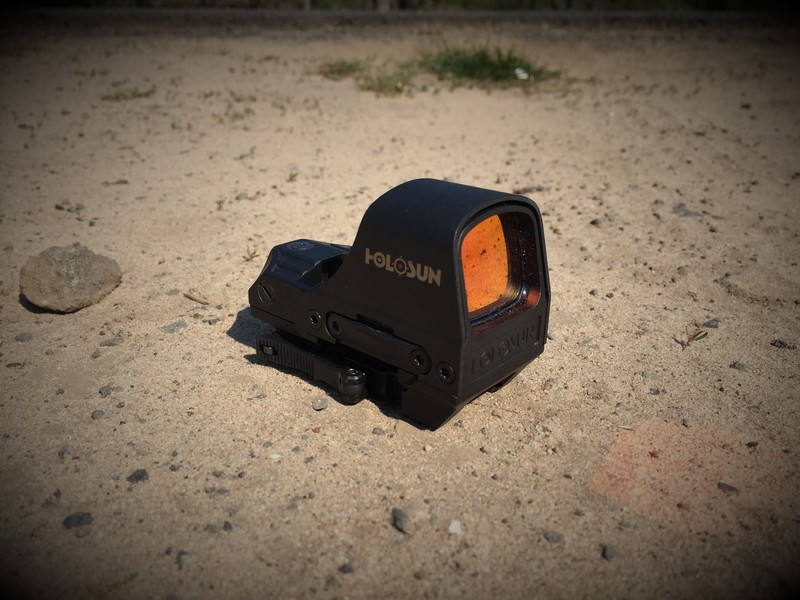 First, the clean processing and high quality of the optics catch the eye. The HS 510 C is 8.3cm long, 4cm wide, and 4.5cm high. The total weight is 235 grams – not bad, considering the mounting is included.
The lens center is approximately 36mm with the integrated mount, providing a co-witness for AR15 iron sights. For a lower third co-witness, there is an optional mounting plate that goes between the mount and optics. The battery compartment can be found on the lower right edge of the housing.
First, the clean processing and high quality of the optics catch the eye. The HS 510 C is 8.3cm long, 4cm wide, and 4.5cm high. The total weight is 235 grams – not bad, considering the mounting is included.
The lens center is approximately 36mm with the integrated mount, providing a co-witness for AR15 iron sights. For a lower third co-witness, there is an optional mounting plate that goes between the mount and optics. The battery compartment can be found on the lower right edge of the housing.
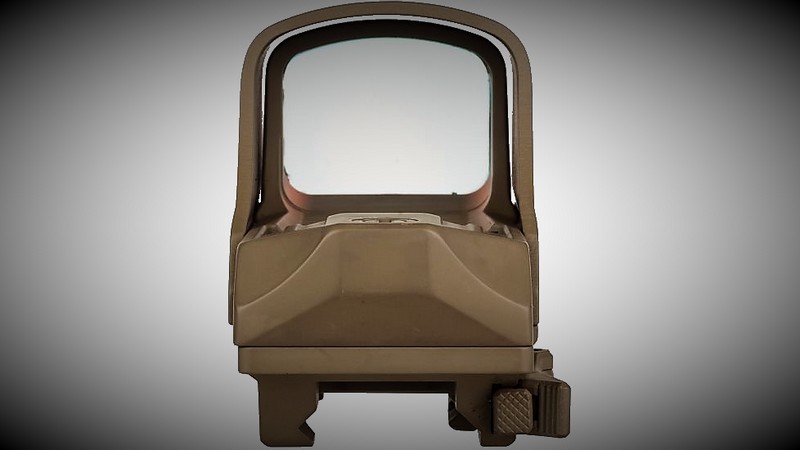 The lens is rectangular and about 2.2cm x 3cm in size. The glass, along with the rest of the internals, is housed in an Aluminum casing (6061). For additional protection, a titanium alloy cover is added to the lens.
The lens is rectangular and about 2.2cm x 3cm in size. The glass, along with the rest of the internals, is housed in an Aluminum casing (6061). For additional protection, a titanium alloy cover is added to the lens.
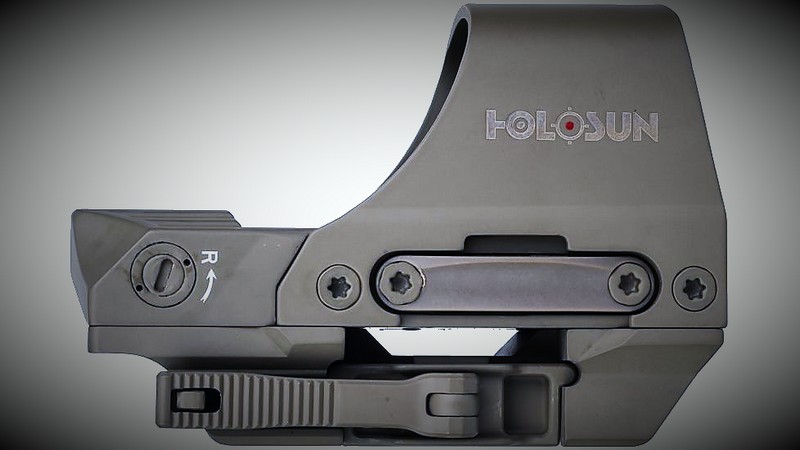 The mounting is perfectly executed: the left side allows for regulating the tension, and on the right side, a quick-release lever lies flat. It is secured against accidental opening or snagging: a small button at the end must be pressed before the lever can be moved.
Throughout our extensive testing, which lasted nearly a whole year, the optic was repeatedly removed from the firearm and reattached – even after various stress tests – we could not detect any shift in zero.
The mounting is perfectly executed: the left side allows for regulating the tension, and on the right side, a quick-release lever lies flat. It is secured against accidental opening or snagging: a small button at the end must be pressed before the lever can be moved.
Throughout our extensive testing, which lasted nearly a whole year, the optic was repeatedly removed from the firearm and reattached – even after various stress tests – we could not detect any shift in zero.
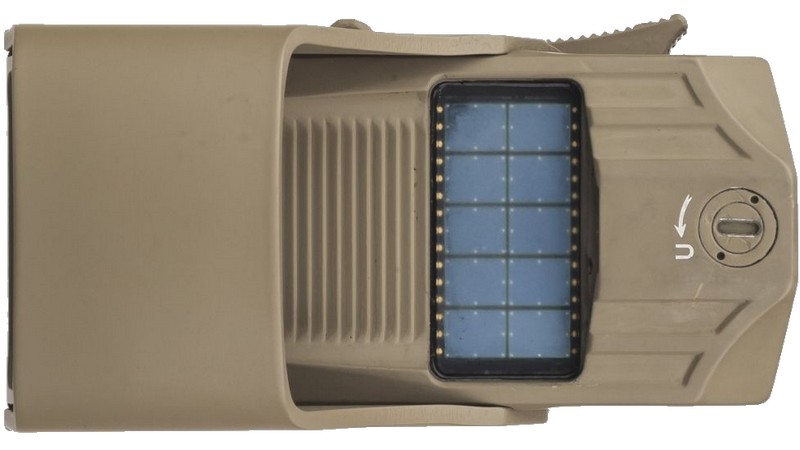 In addition to operating with a CR2032 battery, the HS 510 C comes with a solar panel. This helps preserve the battery in normal use when light is available, allowing the HS 510 C to reach the 50,000 operating hours of the HS 503 GU. The energy consumption is higher for the 510 C due to the technology used: the reticle is projected onto the lens from the rear edge of the housing (shown in the image just before the solar panel).
In addition to operating with a CR2032 battery, the HS 510 C comes with a solar panel. This helps preserve the battery in normal use when light is available, allowing the HS 510 C to reach the 50,000 operating hours of the HS 503 GU. The energy consumption is higher for the 510 C due to the technology used: the reticle is projected onto the lens from the rear edge of the housing (shown in the image just before the solar panel).
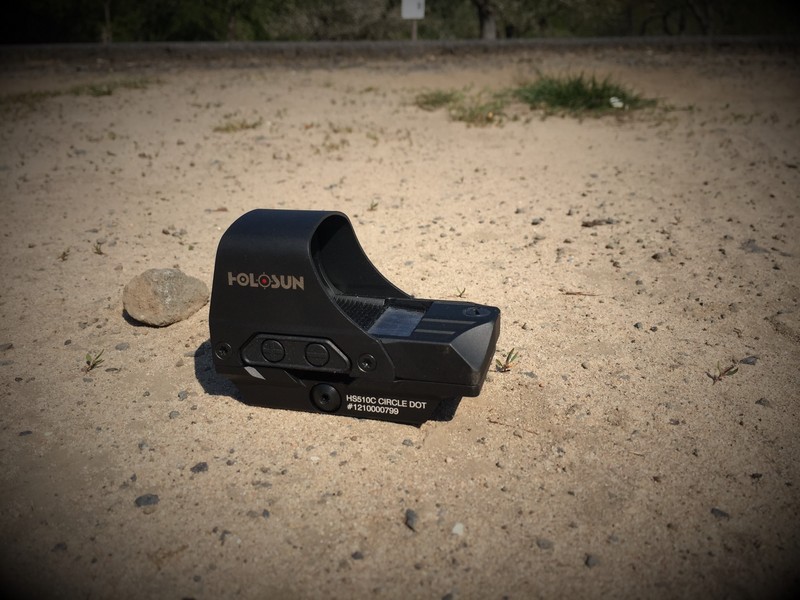 The brightness adjustment buttons are located on the left side. The optics are turned on with + or -, and to turn off, both buttons must be pressed simultaneously. The 12 brightness levels are also regulated with + and -.
Two of the levels are said to be compatible with night vision devices – unfortunately, we did not test this. To ensure the reflex sight is always ready for use without needing to turn on and off, it has an automatic standby that turns off the light after 10 minutes and resumes at the last brightness level with the slightest movement.
The brightness adjustment buttons are located on the left side. The optics are turned on with + or -, and to turn off, both buttons must be pressed simultaneously. The 12 brightness levels are also regulated with + and -.
Two of the levels are said to be compatible with night vision devices – unfortunately, we did not test this. To ensure the reflex sight is always ready for use without needing to turn on and off, it has an automatic standby that turns off the light after 10 minutes and resumes at the last brightness level with the slightest movement.
 We are already familiar with the reticle from the 503 GU: a 65 MOA circle with a 2 MOA dot in the center.
By holding the "-" button for three seconds, the circle disappears, leaving only the 2 MOA dot.
If you hold the "-" button for another three seconds, a third reticle will appear, which is new to the 510 C: only the circle without the dot. This reticle is particularly suitable for shotguns.
We are already familiar with the reticle from the 503 GU: a 65 MOA circle with a 2 MOA dot in the center.
By holding the "-" button for three seconds, the circle disappears, leaving only the 2 MOA dot.
If you hold the "-" button for another three seconds, a third reticle will appear, which is new to the 510 C: only the circle without the dot. This reticle is particularly suitable for shotguns.
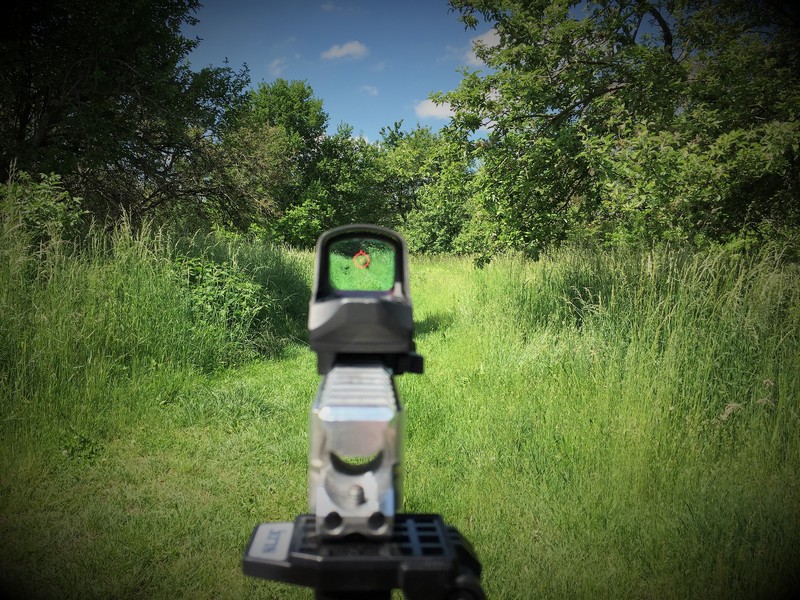 With the solar panel, an automatic mode is added in addition to the manual mode as with the 503 GU. This mode is activated by default upon delivery and regulates the brightness as well as the selection of power sources.
This is a blessing and a curse at the same time: in automatic mode, the sight can be too dim at times, especially when aiming from a darker room to bright daylight outside. The automatic mode can be turned off by holding the "+" button until the reticle blinks – now the brightness must be manually adjusted. We noticed that the battery life in manual mode seemed to be significantly shorter: towards the end of our testing phase, the reticle started blinking, which is usually a sign of a weak battery.
With the solar panel, an automatic mode is added in addition to the manual mode as with the 503 GU. This mode is activated by default upon delivery and regulates the brightness as well as the selection of power sources.
This is a blessing and a curse at the same time: in automatic mode, the sight can be too dim at times, especially when aiming from a darker room to bright daylight outside. The automatic mode can be turned off by holding the "+" button until the reticle blinks – now the brightness must be manually adjusted. We noticed that the battery life in manual mode seemed to be significantly shorter: towards the end of our testing phase, the reticle started blinking, which is usually a sign of a weak battery.
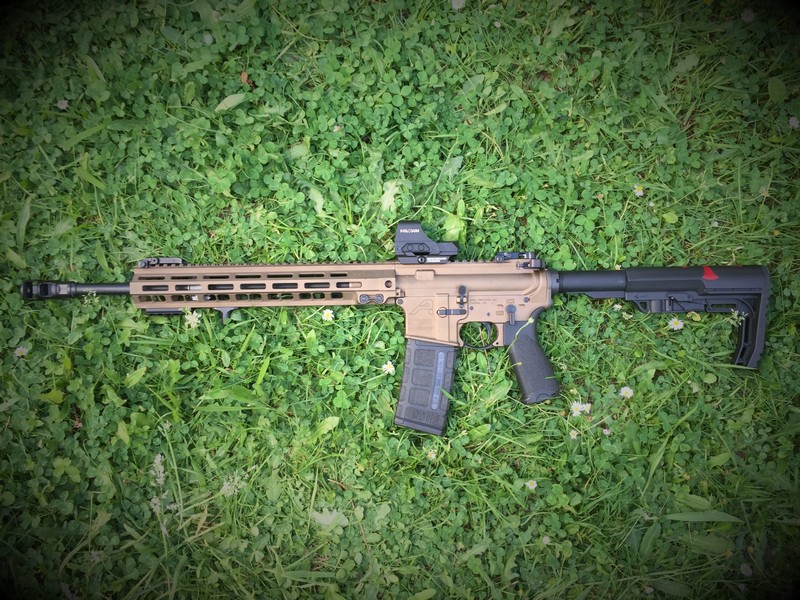 On an AR15, the Holosun 510 C fits well. There is still enough space to attach common magnifiers behind it, and its height allows compatibility with most setups.
Adjustments are made with a screwdriver on the top and right side: one click equals 0.5 MOA – with an adjustment range of +-50 MOA.
On an AR15, the Holosun 510 C fits well. There is still enough space to attach common magnifiers behind it, and its height allows compatibility with most setups.
Adjustments are made with a screwdriver on the top and right side: one click equals 0.5 MOA – with an adjustment range of +-50 MOA.
 Through endless use on the rifle and numerous tests with and without magnifiers, at short and long distances, the 510 C lives up to the 503 GU – if not surpasses it: the wide window provides even freer field of view, giving a small advantage in target acquisition.
Through endless use on the rifle and numerous tests with and without magnifiers, at short and long distances, the 510 C lives up to the 503 GU – if not surpasses it: the wide window provides even freer field of view, giving a small advantage in target acquisition.
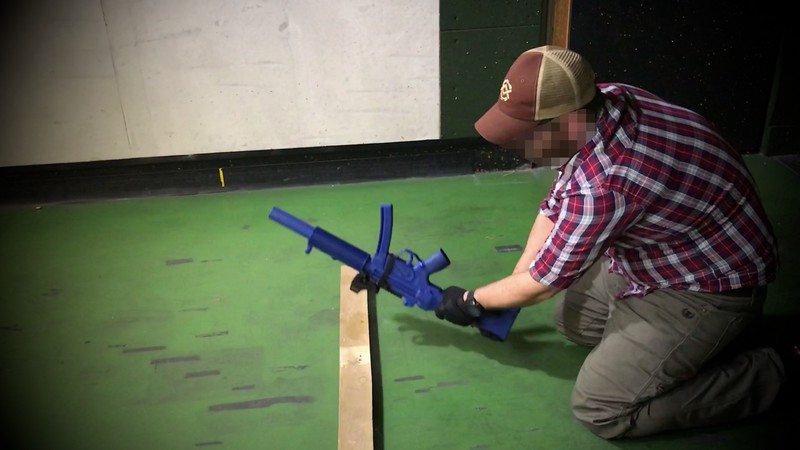 This time, we subjected the Holosun to even tougher tests than the 503 GU. After the usual throwing and dropping tests, which the sight passed without a mark, we used it as a "hammer." The housing gave way, and the glass cracked.
This time, we subjected the Holosun to even tougher tests than the 503 GU. After the usual throwing and dropping tests, which the sight passed without a mark, we used it as a "hammer." The housing gave way, and the glass cracked.
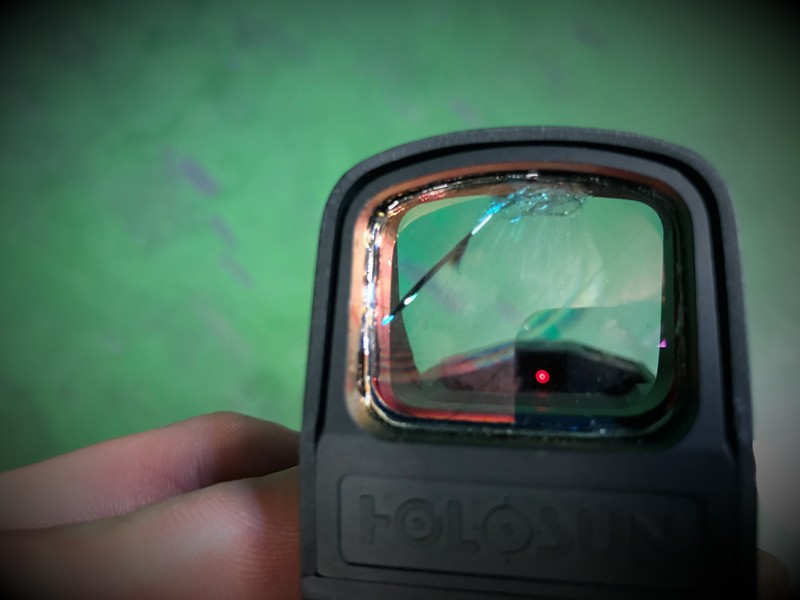 It is clear from the edge of the housing that the outer cover is dented...
It is clear from the edge of the housing that the outer cover is dented...
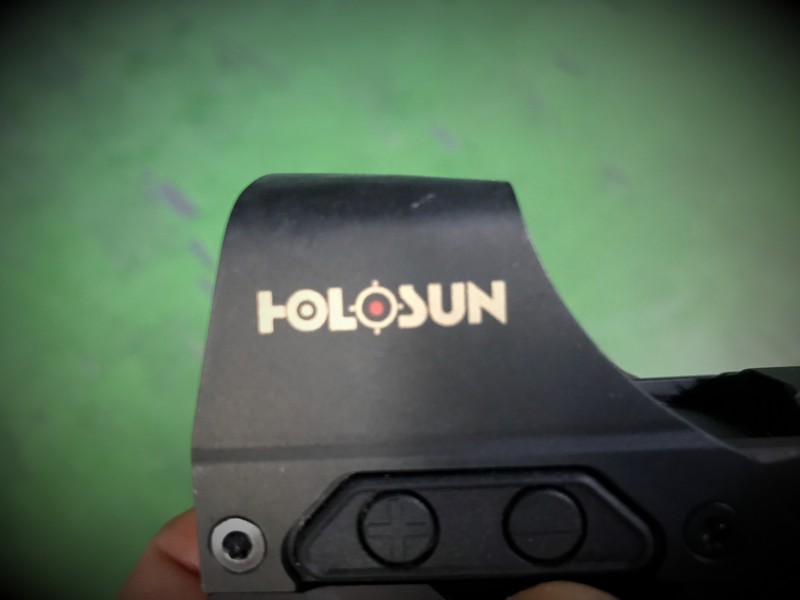 ...though the cover barely gets scratched.
...though the cover barely gets scratched.
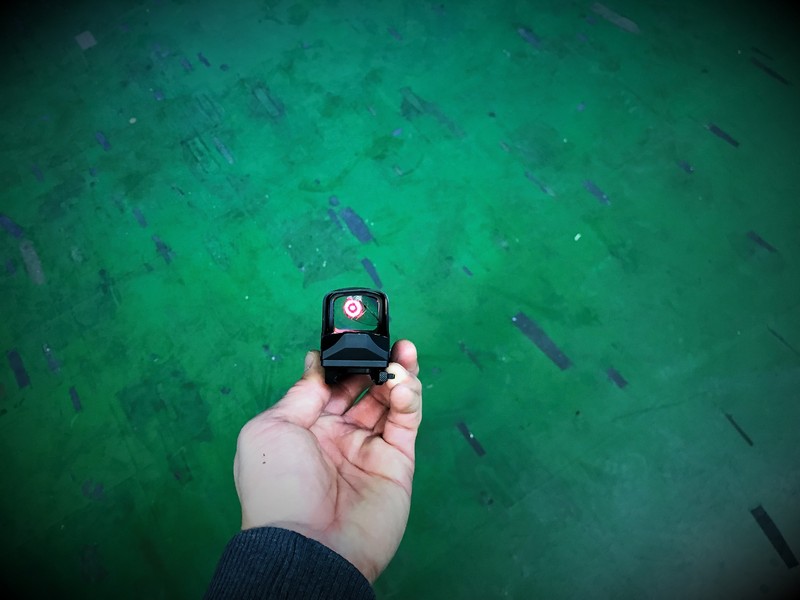 However, this flaw did not affect the reticle or accuracy – despite the cracked glass, the 510 C hits just where it did before. This outcome was somewhat expected, as the housing is inherently weaker, physically, compared to a smaller, tubular body like the 503 GU in use.
However, this flaw did not affect the reticle or accuracy – despite the cracked glass, the 510 C hits just where it did before. This outcome was somewhat expected, as the housing is inherently weaker, physically, compared to a smaller, tubular body like the 503 GU in use.

SPARTANAT is the online magazine for Military News, Tactical Life, Gear & Reviews.
Send us your news: [email protected]
Ad
similar
Get the weekly SPARTANAT newsletter.
Your bonus: the free E-Book from SPARTANAT.


